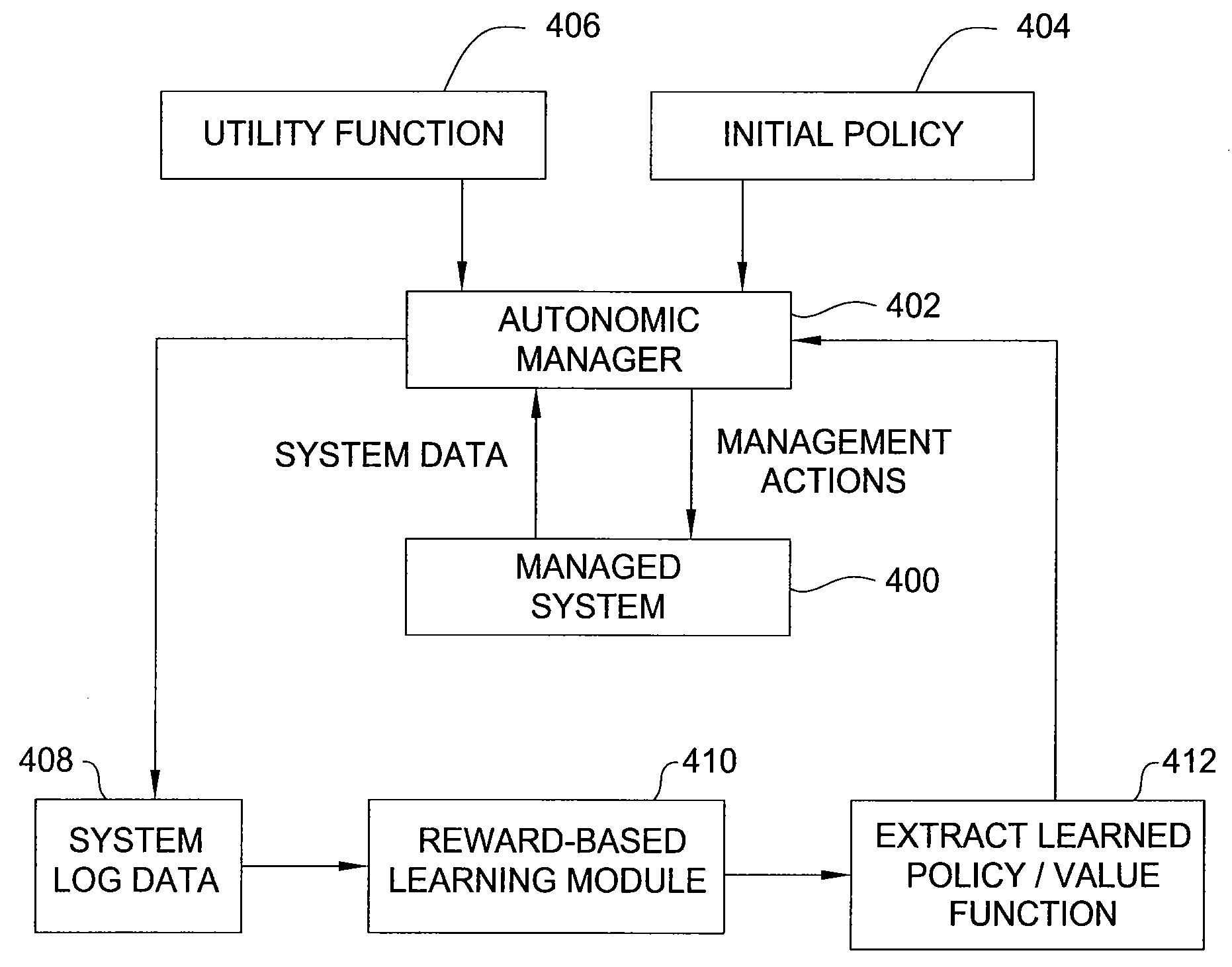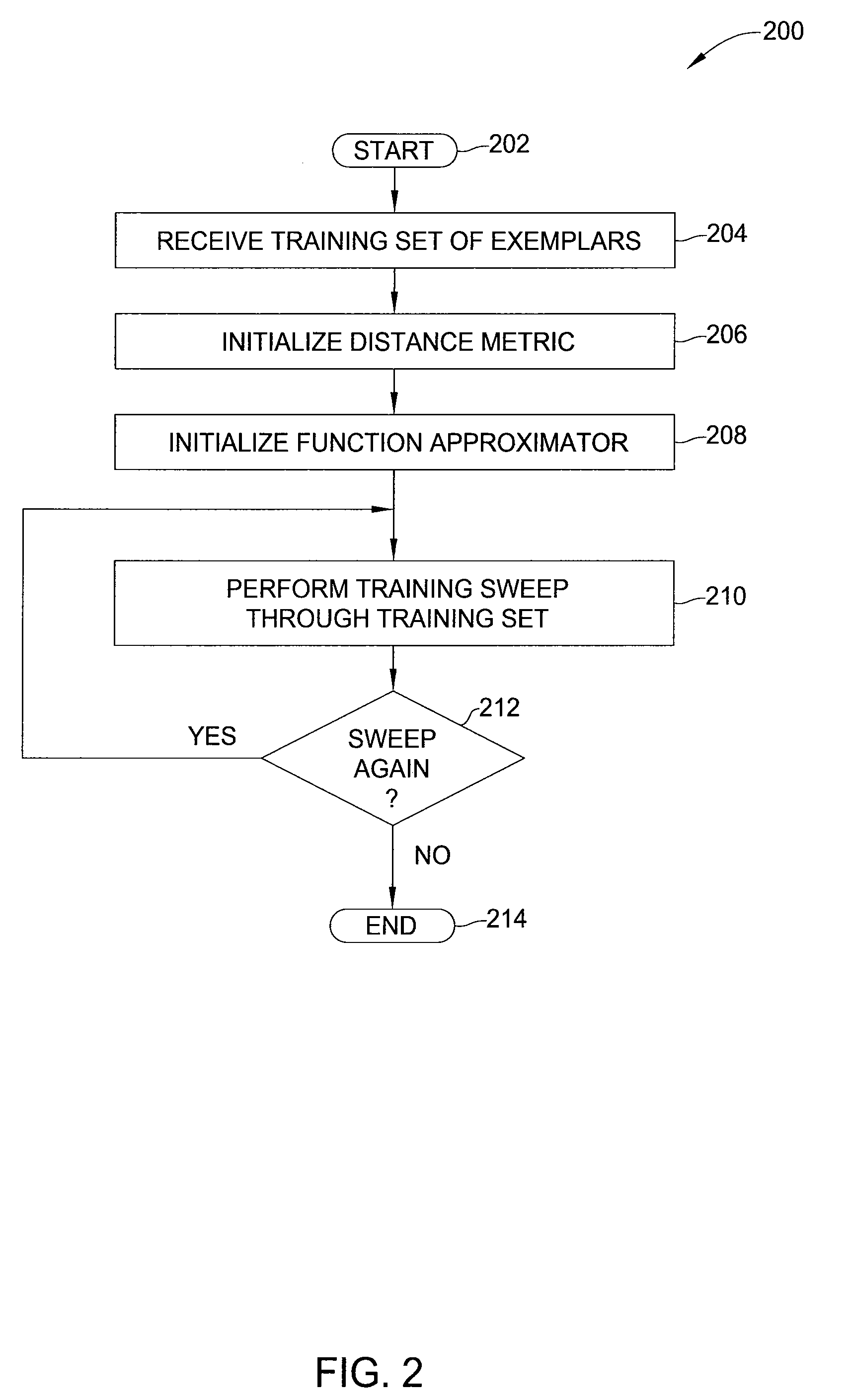Method and apparatus for improved reward-based learning using adaptive distance metrics
a distance measurement and learning method technology, applied in the field of automatic development of management policies using reward-based learning, can solve the problems of difficult learning, time-consuming, and knowledge-intensive, and achieve the effect of reducing learning difficulty, reducing learning difficulty, and reducing learning difficulty
- Summary
- Abstract
- Description
- Claims
- Application Information
AI Technical Summary
Benefits of technology
Problems solved by technology
Method used
Image
Examples
Embodiment Construction
[0014]In one embodiment, the present invention is a method and apparatus for reward-based learning of management or control policies, utilizing innovative methods for distance metric learning. Embodiments of the invention learn a distance metric D( ) expressing a distance between two (state, action) pairs, while simultaneously learning a distance-based long-range expected value function QD(S, a) of performing action a in state s. Typically, the objective in learning a distance metric D( ) is to optimize the accuracy of the value function QD( ) (e.g., expressed as minimization of a Bellman error criterion).
[0015]In some embodiments, the learned management policy may be obtained directly from the value function QD( ) (e.g., by choosing the action a*, from among all possible actions a in state s, that maximizes the value function QD(s,a)). In other embodiments of the invention, techniques for non-linear dimensionality reduction using the learned distance metric D( ) are applied to obta...
PUM
 Login to View More
Login to View More Abstract
Description
Claims
Application Information
 Login to View More
Login to View More - R&D
- Intellectual Property
- Life Sciences
- Materials
- Tech Scout
- Unparalleled Data Quality
- Higher Quality Content
- 60% Fewer Hallucinations
Browse by: Latest US Patents, China's latest patents, Technical Efficacy Thesaurus, Application Domain, Technology Topic, Popular Technical Reports.
© 2025 PatSnap. All rights reserved.Legal|Privacy policy|Modern Slavery Act Transparency Statement|Sitemap|About US| Contact US: help@patsnap.com



